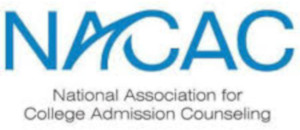Harvard admits some 3000 students each year. Here’s how William Fitzsimmons, the director of admissions and financial aid, described the process years ago. He asked us—a room full of counselors—to imagine the computer making a mistake. Rather than sending 3000 “yes” letters (“Congratulations. It is with pleasure that the admissions committee welcomes you to the class of…”) the computer glitched and sent the “no” letter instead. (‘We had a competitive year with more qualified applicants than spaces in the first year class. We are sorry to inform you that…”) And then the computer went on to send “yes” letters to the next 3000 applicants, the ones who were supposed to get “no” letters. Bill said that no one at Harvard—no professor, no teaching assistant, no librarian, no maintenance person, no one—would be able to tell the difference, that the school would go on exactly as before. Just as many students would go on to get PhDs; just as many students would marry their college sweethearts; the football team would win and lose just as many games.
It took me over ten years to understand the implications of this story. I’m hoping you’ll understand it in under ten minutes.
The point of Bill’s story is that admissions at highly competitive colleges is (except for a small number of unqualified applicants) random. R-A-N-D-O-M. Arbitrary. Arbitrary, indiscriminate, unsystematic. Bordering on haphazard.
Sure, it’s easy to assign a cause AFTER THE FACT to why a candidate was rejected: “Yes, Percy was valedictorian, but there are lots of high schools in the country and he didn’t have enough community service hours.” And it’s true that there are more valedictorians than there are spaces in the first year class so let’s try again to assign a cause to a “no” letter: “Yes, Patti was valedictorian and had an 800 Math and an 800 CR on her SAT, but she’s not a strong athlete.” Again, true that the most highly competitive schools can reject students with top scores. Back to the drawing board: “Yes, Paul was graduated first in his class, had perfect SATS, played the violin in the Youth Symphony, spoke five languages and built a nuclear reactor in his basement out of sticks and mud, but his grandmother didn’t work in a coal mine in Eastern Pennsylvania.” Ah, there you are: If only Meemaw had known before she took that job.
The “reason” that kids get rejected are absurd. The “explanations” are laughable. Draw the bull’s-eye after you shoot your arrow. The alleged causality is straight out of cargo cults. Here’s the real reason, the reason that the director of admissions of Harvard tried to get through to me all those years ago, the reason that many top kids get rejected from many top schools:
There is no reason. There are just more kids than there are spaces.
Recently, I had the above discussion about the arbitrariness of admissions with a lovely young man, a ninth grade student-athlete with straight A grades in an honors curriculum. He asked me what he could do to be guaranteed admission to Duke: what courses should he take, what sports should he play, what musical instruments should he learn, what languages should he master? I told him—gently, I hope—that if he was still asking about an admissions guarantee at a highly competitive college that he hadn’t been listening.
I hope he’ll be able to internalize the point—that there is unpredictability to admissions—more quickly than I did.
Next week, the good news: Why being admitted to a highly competitive college or university matters less than you could possibly believe.
Until then,
David
David Altshuler, M.S.
(305) 978-8917 | david@davidaltshuler.com
David
About Me
David has toured hundreds of colleges, traditional boarding schools, and therapeutic programs. He has written books on admissions and parenting. His 500 articles on parenting, admissions, and children who learn differently are available here.
Recent Posts
Copyright © David Altshuler 1980 – 2024 | Miami, FL • Charlotte, NC | (305) 978-8917 | david@davidaltshuler.com


